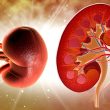In cases where it is difficult to demonstrate the improvement of a drug or a device in hard endpoints such as mortality, we should look for softer and easier to prove endpoints. The problem is that these soft endpoints are often subjective (such as sensation of shortness of breath or angina pectoris) and they could...
Very Encouraging Results for TAVR in Low-Risk Patients
Courtesy of Dr. Carlos Fava. About 12% of patients >75 years old have aortic stenosis. In 3%-4% of them, such disease is severe. Transcatheter aortic valve replacement (TAVR) has already proven to be beneficial for extreme-, high-, and intermediate-risk patients. Regarding low-risk patients, we currently have different analyses; two of them are randomized and their results are...
Promising Results for Tricuspid Repair
Courtesy of Dr. Carlos Fava. Tricuspid regurgitation (TR) is more common than we thought. Around 1.6 million people in the US and over 3 million in Europe experience significant TR. It usually has a functional cause and its negative impact on patient prognosis is strong. Its surgical treatment is challenging, and it is important that its resolution...
Kidney Insufficiency and the Risk of Developing Aortic Stenosis in the Future
Chronic kidney disease, even in moderate or severe stages before dialysis, is associated with an increased risk of aortic stenosis according to this work recently published in J Am Coll Cardiol. Both share several risk factors, something that complicates the identification of the association between these diseases due to multiple confounding variables. The study...
Mitral Valve Repair with MirtaClip Was Feasible and Safe
Transcatheter mitral valve repair (TMVR) with MitraClip was shown feasible and safe, and therefore a viable option for symptomatic patients with severe mitral valve regurgitation of prohibitive risk. In this regard, the procedure alleviates symptoms, cardiac regurgitation and has a potential benefit on ventricular remodeling. However, many patients presented atrial fibrillation (AF) and mitral valve...
Pulmonary Artery Denervation Starts to Show Results
Pulmonary artery denervation is associated with significant hemodynamics improvement, as well as improved clinical outcomes in patients with both post and precapillary pulmonary hypertension. Even though there are several studies on this technique, they included few patients (with different criteria and different devices), which is why we need more randomized studies. This prospective, randomized, study...
Aortic Stenosis and Dialysis: Is TAVR the Strategy of Choice?
Courtesy of Dr. Carlos Fava. TAVR has been shown beneficial in high and moderate risk patients, but there is a group of patients that require dialysis on account of kidney deterioration. This comorbidity is due to bad cardiovascular evolution associated to diabetes, bleeding and thromboembolic events. For some time, we have been using an...
Treating Tricuspid and Mitral Valves with MitraClip Improves Quality of Life
Courtesy of Dr. Carlos Fava. It has been shown that significant tricuspid regurgitation (TR) is an independent predictor of bad evolution in the presence of mitral valve disease. Its prevalence is not low, reaching up to 50% in patients undergoing surgery for mitral regurgitation (MR). This study included 61 patients with significant TR and MR. 27...
TAVR with Prior MRS: A New Challenge
The benefits of transcatheter aortic valve replacement (TAVR) for high-risk, prohibitive-risk (class I) or intermediate-risk (class IIa) patients have already been proven, but there is a growing population of patients with a history of myocardial revascularization surgery (MRS) who experience severe aortic stenosis. Decision-making in these cases is anything but simple, mainly due to the presence of...
Contrast Induced Kidney Injury, Infamous Problem with No Magical Solutions
In patients at high risk of developing kidney complications undergoing angiography, we did not observe benefits when administering intravenous sodium bicarbonate vs. saline, or oral N-acetylcysteine vs. placebo, as to the prevention of death, dialysis or persistent deterioration of kidney function at 90 days, or the prevention of contrast induced kidney failure. Many small studies...








